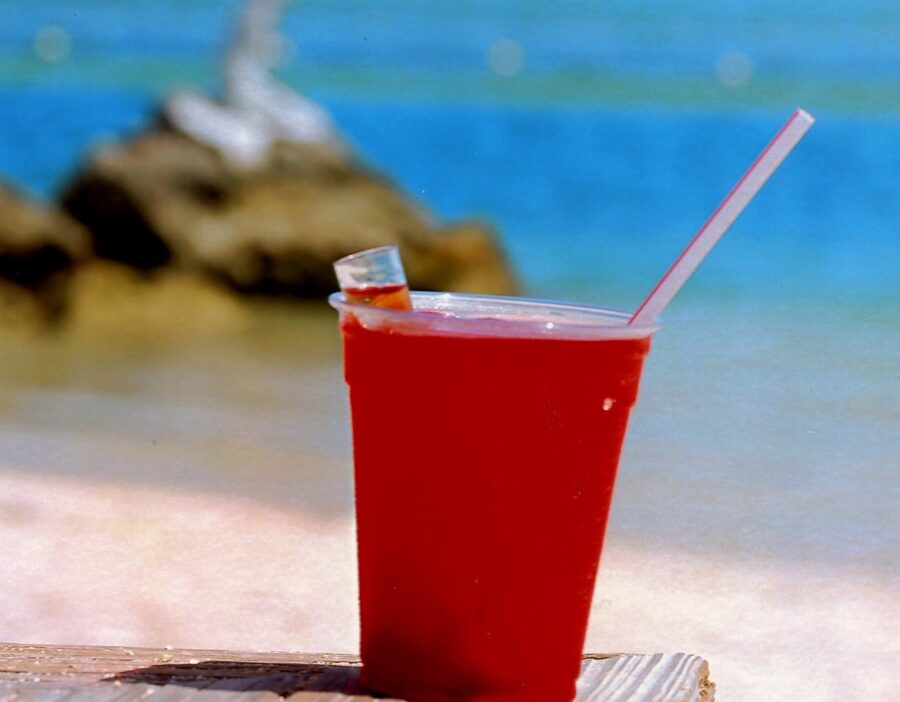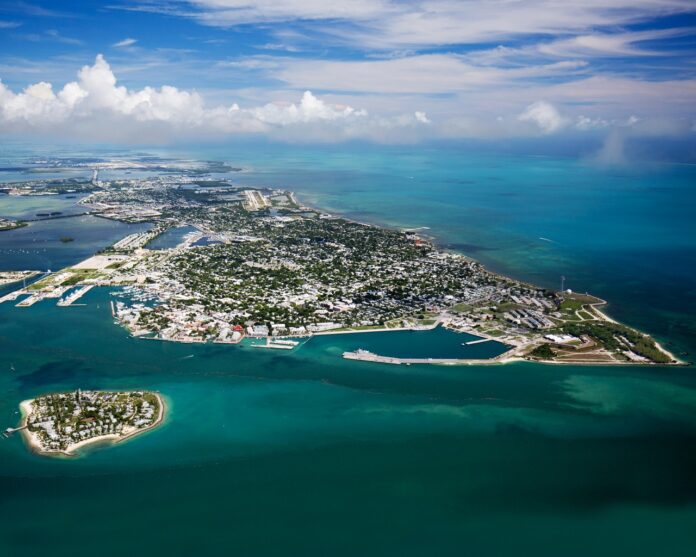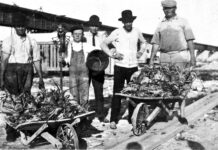The year 2023 marks Monroe County’s 200th anniversary, and the celebrations are underway.
Unsurprisingly, the Southernmost City has absorbed much of the attention. It stands to reason, as Key West has always been Monroe’s heart, soul and county seat. Indeed, it has been its historical anchor, and there is much about Key West, the Florida Keys and Monroe County to celebrate.
The wrecking industry that transformed Key West into the country’s wealthiest city per capita is a significant nugget of local history. Sponges, cigars, turtles, writers, artists and pineapples have all contributed to the Monroe County story. The arrival of Henry Flagler’s train and the Overseas Highway went a long way to civilizing the Florida Keys by delivering conveniences like mail, food and household staples, which brought a greater sense of daily security — and not just to Key West but to all the communities developing up and down the island chain.
Settling in an outpost community like Key West, the county seat, was one thing. Carving out a life on one of the islands not named Key West was an altogether different experience. Those brave souls who struck out on their own, cleared paths, homesteads and farmland are often overlooked when stories about Key West and the Florida Keys are told, and those brave pioneers should most definitely be celebrated.
Their ancestral blood is the true conduit that links one island to another and joins the Florida Keys together. Let’s take a moment to recognize (among others, for which I will apologize in advance for not identifying) the Pents, Currys, Pinders, Alburys, Lowes, Saunders, Johnsons, Parkers, Thompsons, Bakers, Russells, Sands, Sweetings and so many others for their contributions to Monroe County history. In the spirit of the county’s 200th anniversary, let’s raise a toast to those good people.
It should be noted that the county looked very different than it does today, and not just because of development. Its modern boundaries incorporate 3,737 square miles, of which about 73 percent is water. When the county was established on July 2, 1823, it was a significantly larger piece of real estate.
The county became the territory’s sixth and was named after the then-sitting fifth President of the United States, James Monroe. In those days, the county lines extended north from Key West to the southern shore of Lake Okeechobee and west to the Gulf of Mexico. As Florida grew in population, Monroe County shrank in size.
On Feb. 4, 1836, the newly formed Dade County carved out a chunk of Monroe County that included some of the Keys. Dade County incorporated all the islands north (or east) of Bahia Honda. However, when the county lines were redrawn on Dec. 8, 1866, most of the Keys were returned to Monroe. At that point, Broad Creek, flowing north of Key Largo and between Broad Key and Swan Key, became the new and permanent county line. The handful of islands north of the creek remained in Dade County – though the spirit of Monroe County hopefully remains with them.
Southwest of Broad Creek, Manatee Creek flows under the first bridge encountered along the 18-Mile Stretch that links Key Largo to the mainland (Jewfish Creek Bridge is the second). At Manatee Creek, around Mile Marker 115, on one side of the bridge is Dade County and the South Dixie Highway and, on the other, Monroe County and the Overseas Highway. To the west, up on the mainland, Monroe County borders Collier County, which means that the modern county is largely made up of islands and Everglades.

So, let’s celebrate the 200th anniversary of the county by risking a little case of brain freeze. Let’s make a toast with what should be considered the official drink of the Florida Keys, an ice-cold rumrunner. The sub-tropical libation was first concocted at a tiki bar on Windley Key in the Islamorada area back in the 1970s. The bartender who invented the drink was officially named John Egert but was locally known as Tiki John.
The impetus behind the drink was overstocked bottles, and Tiki John’s manager challenged him to create a drink in order to use up some excess inventory. Tiki John started experimenting, and the winning drink was a combination of rum, lime juice, sugar, banana, and blackberry liqueurs mixed in a blender with a scoop of ice and served frozen.
The original rumrunner did not have the reddish-pink hue it has today. The drink’s famous color came about after Tiki John ran out of sugar while at the tiki bar one day and had to improvise, which he did by substituting grenadine for the sugar. Grenadine, by the way, is made from pomegranate. Ever since his bar ran out of sugar, the rumrunner has been served frozen, red and frequently with a floater of dark rum or 151 – sure, you can have it on the rocks, but that is not how this classic Florida Keys cocktail was first imagined.
I think every one of them should have a little floater spilled on top for this special occasion. Cheers, Monroe County, and happy anniversary.


























